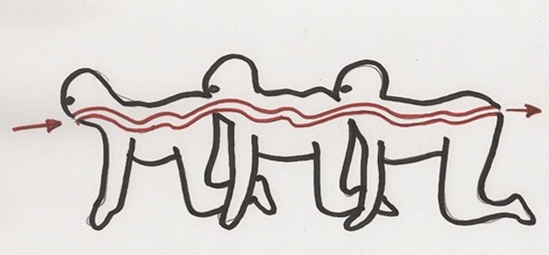When I think of Utah’s Bryce Canyon National Park, I envision its beautiful rock spires (also known as “hoodoos”) reaching into the sky. I think of it as an amazing place to visit and hike, one of our country’s beautiful national parks famous for its stunning vistas, and for its unique plants and animals. It’s a place I’d love to take my young daughter someday, to show her the wonders of our Western landscapes.
The last thing I think of is a dirty coal mine. Unfortunately, the Bureau of Land Management (BLM) is getting ready to open more than 3,500 acres of land next to the park for a new Utah coal strip mine, just to supply a few more years of dirty energy to power to Los Angeles.
It turns out that the city of Los Angeles is largely responsible for this misguided assault on Bryce Canyon — the coal mined at Alton would be sent to the Intermountain Power Plant, which in turn feeds 50 percent of its electricity to the Los Angeles Department of Water and Power.
Mining would pollute the region’s clean water and air, flood Bryce Canyon’s world-famous dark night skies with light, destroy wildlife habitat, disturb the serenity of the park with industrial noise, and generate toxic coal dust from hundreds of trucks hauling coal. It would turn southern Utah into an industrial zone, jeopardizing tourism and community health.
I’ve worked to stop mountaintop-removal mining in Appalachia for many years, and I can say from first-hand experience that a coal strip mine is the last thing you would want next to a national park.
More than 1.2 million visitors come to Bryce Canyon annually because it’s a beautiful, valuable, and important landscape. Here’s how the National Park Service describes it:
Bryce Canyon National Park is a scientist’s laboratory and a child’s playground. Because Bryce transcends 2000 feet (650 m) of elevation, the park exists in three distinct climatic zones: spruce/fir forest, Ponderosa Pine forest, and Pinyon Pine/juniper forest. This diversity of habitat provides for high biodiversity. Here at Bryce, you can enjoy over 100 species of birds, dozens of mammals, and more than a thousand plant species.
We should not be jeopardizing one of our nation’s treasures — especially not for an outdated, filthy, and dangerous energy source.
Thousands of Los Angeles residents agree, and are urging City Council members and the Los Angeles Department of Water and Power to capitalize on the city’s plentiful solar energy and eliminate coal power by 2020. If you live in Los Angeles, take action now.
Home-grown clean energy will protect our national parks, health, and economy. Los Angeles can create thousands of local jobs and reduce energy bills for city residents by investing in solar and energy-efficiency, instead of importing dirty energy by burning out-of-state coal.
In addition, the BLM should stop this dirty, dangerous coal mine expansion and protect the Bryce Canyon region for future generations. I hope you will tell BLM to protect Bryce Canyon by taking action now.
The Sierra Club’s website, HaltAltonCoal.com, has more information and opportunities to take action, and you can sign up to attend the BLM listening sessions in Utah from November 29 through December 7. Please visit the site and get involved.
Together, we can protect beautiful Bryce Canyon National Park, southern Utah’s tourism-based economy, and the health of local residents by stopping the Alton Coal Strip Mine expansion. We can also put Los Angeles on a path to clean energy, and fulfill the mayor’s commitment to make the city coal free by 2020.


